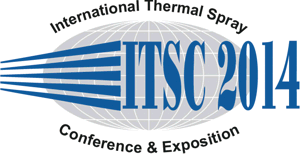
|
| Abstract No.: |
|
Scheduled at:
|
Thursday, May 22, 2014, Hall A 3:20 PM
Plasma Spraying 2
|
|
| Title: |
Examination of the origin of nonbonded inter-splat interface in plasma sprayed ceramic coating
|
|
| Authors: |
Guan-Jun Yang* / School of Materials Science and Engineering, Xi'an Jiaotong University, China
Lin Chen / State Key Laboratory for Mechanical Behavior of Materials, Xi'an Jiaotong University, China
Cheng-Xin Li/ State Key Laboratory for Mechanical Behavior of Materials, Xi'an Jiaotong University, China
Chang-Jiu Li/ State Key Laboratory for Mechanical Behavior of Materials, Xi'an Jiaotong University, China
|
|
| Abstract: |
Most of the inter-splat interfaces in plasma-sprayed ceramic coatings are present as the nonbonded state. It has been widely accepted that these nonbonded interfaces have been never bonded due to some reasons related to insufficient wettability, gas-desorption and rough deposition surface, and so on. It is also argued that the effective bonding is preferably formed at the splat center than the splat periphery due to a high impact pressure at the splat center. However, the whole splat is split into many small segments by the intra-splat cracks. For all segments at both splat center and splat periphery, there are both bonded interface and nonbonded interface between each segment and the deposition surface. This obvious contradiction has not been understood up to now. In this study, to comprehensively understand the formation mechanism of the nonbonded splat/splat interface, both the adjacent surfaces of a inter-splat interface in the plasma-sprayed La0.5Sr0.5CoO3 (LSCO) coatings were examined in comparison to the free surface of splat. Results show that the free splat surface presents a relatively smooth surface morphology. However, both the adjacent surfaces of a inter-splat interface exhibited a relatively rough surface, resulting from the residual splat material during the fracture of the splat/splat interface. This fact implies that these nonbonded splat/splat interfaces have ever bonded, and the nonbonding feature could be attributed to the fracture of the bonded interface due to the interface shear stress resulting from the tensile stress of the splat during its cooling process. The examination by using different substrates revealed that the thermal expansion mismatching influenced significantly the debonding of lamellae interface.
|
|
